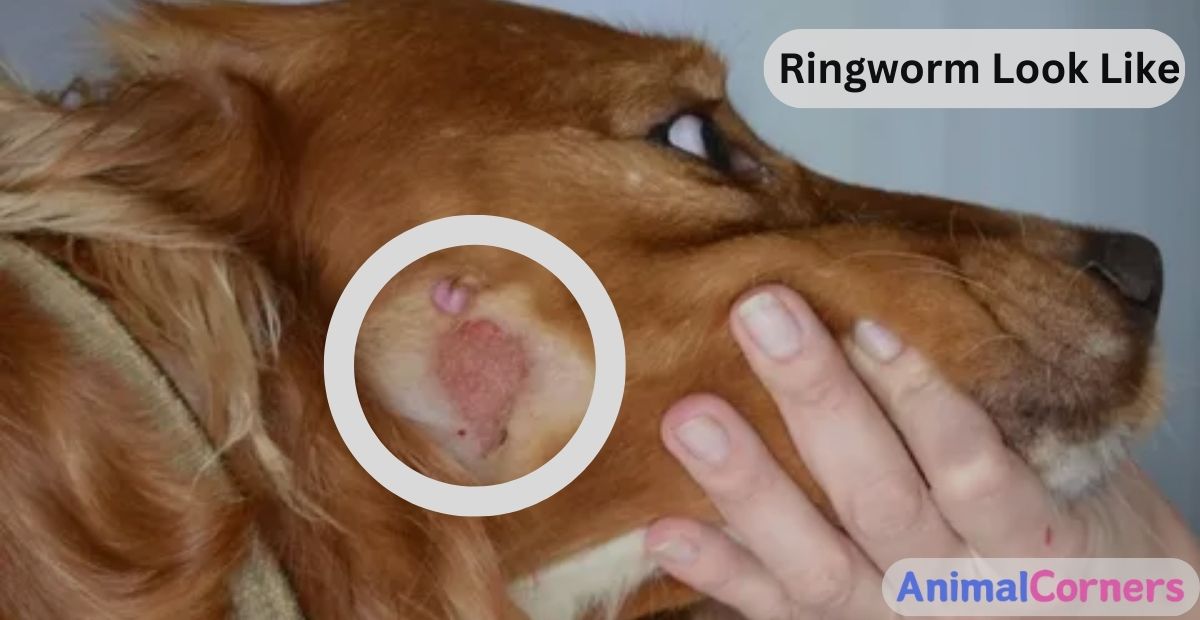Soft Tissue Injury in Dogs | Causes, Symptoms, Treatment and More

Soft tissue injury in dogs includes any damage to the muscles, tendons, or ligaments. It’s like when humans pull a muscle or sprain an ankle; dogs can also experience these types of injuries. These injuries can result from overuse, trauma, or playing too hard.
Finding and treating soft tissue injuries quickly is essential. Think of it as fixing a small leak before it becomes a flood. Early treatment can prevent the injury from worsening, help your dog heal faster, and reduce overall discomfort. It’s all about ensuring they return to their playful, happy selves as soon as possible.
This guide aims to help dog owners know about soft tissue injury in dogs, identify soft tissue injuries early, understand their causes, and explore effective treatment options. Knowing how to properly care for your furry friend during these times can significantly lessen their pain and accelerate their recovery.
Focus on this best guide from Animal Corners if your dog is facing this issue.
Types of Soft Tissue Injuries

Understanding the various soft tissue injuries is key to rendering high-quality medical care to canine patients. Here’s a closer look at each type:
Strains: Injuries to Muscles or Tendons
The muscle strains may be either due to stretching of muscles and tendons, which are tissues of muscles that connect them to bones, or a tear beyond their limits. This kind of ailment is prevalent in those kinds of activities that involve a lot of jumping and sudden joltings, and the patients usually experience pain/limping.
Sprains: Injuries to Ligaments
Sprained ligaments refer to the cases when ligaments that are holding bones to each other get overstretched or torn. These injuries are largely due to rotation movements, leading to swelling, loss of balance, and pain.
Contusions: Bruises from Direct Trauma
As is a common statement, contusions are bruising caused by the impact of the skin and the tissues below it. There is a mix of outside bruising, inflammation, and interior bleeding or soft tissue damage.
Lacerations: Cuts or Tears in the Skin
Lacerations call for deep cuts or wounds of the skin, usually from blunt objects or accidental causes. These injuries are characteristic of gross edges that might lead to cut or tear infection formation, requiring immediate professional intervention to prevent complications during the healing process.
Abrasions: Surface Scrapes
In scrapes, the outer skin layer is involved. Thereby, the surface roughness leads to the occurrence of the problem. They often are less severe than lacerations but can be painful and result in infection.
Aggravated by soft tissue injuries, pet owners can thus spot the signs of their pets’ discomfort in time and get the corresponding, well-thought-out treatment to aid the healing process.
See Also: Yunnan Baiyao Dosage for Dogs
Symptoms of Soft Tissue Injuries

A large percentage of canine injuries involve the soft tissues; therefore, recognizing the symptoms of soft tissue injuries will help prompt treatment. Here are some detailed notes on each symptom:
Limping or Refusal to Bear Weight
An injury will bring out characteristic symptoms in dogs, such as a lame leg that does not want to put weight on it. This may occur, for example, if they injure a muscle, tendon, or ligament. They are cautioned and intended to make the hurt spot not worsen.
Swelling or Bruising
Swellings come when extra fluid is trapped in the area that has been injured, and bruises appear as blue, purple, or yellow marks on the skin that are brought by bleeding under the skin surface. They both hint that an anomaly exists inside us.
Pain on Touch
When the dog suddenly pulls away or shows some noises or a fear-like reaction at a specific place, the dog can indicate that it has a problem. Such a fact proves that the area is more prone to damage.
Reduced Activity or Lethargy
A dog that is normally very energetic but suddenly becomes lethargic or doesn’t seem to be into practice could be hinting that they are hurting. When the dog is not in bad condition, it will try to recover mostly by resting.
Whining or Other Signs of Distress
Sometimes, the dog can’t lead us to where it hurts, but still, it may try to inform us that something is wrong by incessant whining, exaggerated barking, and acting differently. It is through expressing their needs in this way that they make us see that they need care.
An integral factor in this is that we should pay attention to the signals our canine companions are trying to convey. Early identification of these cues often translates into better interventions, ensuring a faster healing process for their playful and cheerful personalities.
What is the Diagnosis of Soft Tissue Injuries?

Diagnosing soft tissue injuries in dogs is the first step toward their recovery. A thorough diagnosis helps in understanding the nature and extent of the injury. Here are the main techniques used in the diagnosis:
Physical Examination
Physical Examination will normally be the first method to identify a soft tissue injury. The vet will physically examine the dog by looking at its movements, checking for any swelling, bruises, or other visible signs of injury, and putting the dog through pain tests.
The examination is supposed to provide a starting point for the problem and how severe it is.
Imaging Techniques: X-Rays, Ultrasound, MRI

Various imaging method techniques are instrumental for diagnosing soft tissue injuries since they allow the veterinarian to look inside the dog.
- X-rays are considered good in the cases of bone and organs, although they cannot and can sometimes reveal injuries to denser tissues.
- Ultrasound helps view softer tissues, like muscles and tendons; with its aid, one may be able to diagnose strains or torn.
- MR (magnetic resonance imaging) is the most detailed view, displaying detailed hard and soft tissue images. Deep or complicated injuries often miss a diagnosis, but this technique is especially good.
Manual Palpation
A thorough examination of the dog involves careful palpation tactilely (feeling) the dog’s body with the vet’s hands to sense any discomfort, heat, swelling, deformities, or other discrepancies in the muscles, ligaments, or joints. It is not always easy to pick out the slight little variations that hint about the injury.
These diagnostic methods, if used individually or together, help us figure out our patients’ problems. This will mean an experienced rectification, which is critical for future therapy follow-ups.
Animal Corners Point of View about “Treatment Options”

The comprehensiveness of soft tissue injury therapies in dogs is very critical for the dogs to get well. These processes can be either minimally invasive through stents and staples or more invasive, such as physical repair via surgery or harvesting stem cells.
Rest and Confinement
A large number of soft tissue injuries are healed by simply resting. So, rest is the base of the recovery of the soft tissues. Accordingly, dog physical exercises may need to be limited to protect the injured body part.
Cold and Heat Therapy
Using ice packs on the affected part of the body can be beneficial in shrinking the swelling and inflammation during the beginning period of the injury.
Once the swelling subsides, heat therapy, such as heated towels, is recommended to improve the blood flow and speed up the cure. The safe and proper utilization of these therapies must reduce aggravating injuries.
Anti-inflammatory Medications
Vets may resort to painkilling and anti-inflammatory drugs to ease the pain and swelling, respectively. The list can include, but is not limited to, NSAIDs for dogs that are specifically formulated. To avoid this, it is compulsory that you strictly adhere to the dosage instructions recommended by the vet because improper use can lead to several unwanted side effects.
Physical Therapy and Rehabilitation
Affected physical therapy and rehabilitation can be useful to recover strength and flexibility in the affected body part. It can also cover activities such as structured exercises, massage, and other techniques facilitating recovery and preventing cases of re-injury.
Surgery (in Severe Cases)
Sometimes, surgery may be the last option if the injury is severe and does not respond to slight invasions. As to which surgical options can be applied, it depends on what part of the body and in which type there is an injury, and the purpose of these options is to fix the damaged tissue. Immediately after surgery, rest is very much needed, followed by rehabilitation. These will help manage the pain and promote the patient’s recovery speed.
It is worth mentioning that each of the above-mentioned treatment methods is indispensable for rehabilitating dogs with soft tissue injury. Ensuring the right combination of therapies is used through cooperation with the veterinarian is vital to a speedy recovery process for your pet to alleviate the symptoms and be playful and happy again.
Common Queries for “Soft Tissue Injury in Dogs”

How Long Does Soft Tissue Take to Heal in Dogs?
In most cases, the healing time for soft tissue injuries in dogs is different as it could vary depending on how severe the injury is and the dog’s health condition. Minor single injuries or sicknesses may start to recover in a couple days to a week, while serious injuries may take a few weeks and even months to fully recover. A good rest is as important to the dog as it is to follow the vet’s treatment plan to promote faster and healthier healing.
Can Soft Tissue Damage be Permanent in Dogs?
In certain circumstances, overlooking the seriousness of the soft tissue injury or an inadequate treatment can result in permanent damage. The consequence is that people may have chronic pain, be restricted in movements, or face other sorts of long-term problems. Nevertheless, good and well-timed therapy usually helps the canines cope with soft tissue elements without permanent consequences.
Will Soft Tissue Damage Heal on Its Own?
Mild soft tissue injuries in dogs are most likely successful by proper rest and care; however, you should consult a vet for suspected soft tissue injuries. Sometimes, symptoms are not that pronounced, but they can end up in grave situations without proper and timely treatment. A veterinarian can help a dog owner choose the best way of treating a wound, which includes rest, medicine, or other remedies that will allow the wound to heal properly and reduce the disorder that may happen later.
Conclusion
Caring for an injured small animal takes a lot for the first few days. However, armed with the right identification, treatment, and prevention of illnesses, you have an important role in their healing and overall health. Remember that it all boils down to team effort between the dog, you, and the vet. Whether it’s assisting with medicine taking, providing them with the rest they need, and being there for support, your role is also crucial. And even if, over time, injuries can slow down the process a bit, it can also be resolved through patience and the right kind of care. It can thus take things back to their previous condition.
Keep a close eye on their health, stay informed, and here’s to many more happy, tail-wagging days ahead!




